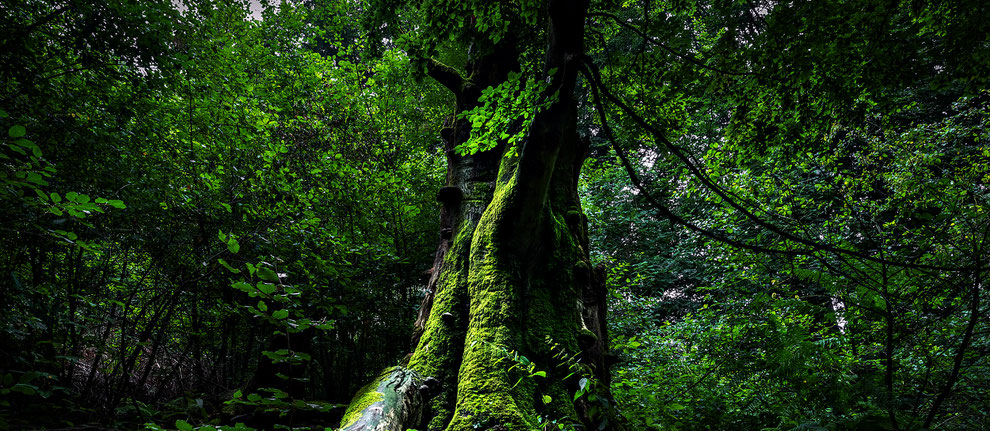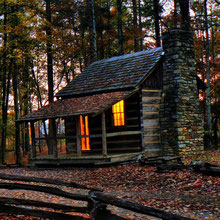Changelings in Outlander - why Claire Fraser left behind a baby in the Outlander woods
Imagine walking through the woods and hearing a baby cry, what would you do? Of course you would look for the baby. But say you traveled from the 20th century to the 18th century, say you are
Claire Fraser and you walk in the Outlander forest with your friend Geillis and you hear that same baby cry. What would you do? Claire's first reaction, of course, was to save the baby, but she
is restrained by Geillis. According to Geillis, the crying comes from a "fairy hill", and the only thing she will find there is a changeling, a child who has been exchanged by the fairies, not a
human baby.
The medically trained Claire does not believe in such fairy tales and goes looking anyway. On the hill she finds in a tree hollow a newborn critically ill baby wrapped in cloths. At the feet of
the child is a wooden bowl with milk as an offering to the fairies. The child has just died and Claire is completely heartbroken by the fact that the parents left their baby in the woods. Now we
can hardly imagine that this scene really happened, but centuries ago it was reality.
Changelings in the Outlander world
Already in the Middle Ages people believed in the sad myth of changelings, but also far afterwards. Even Shakespeare's comedy The Midsummer Night's Dream, written in 1600, features a changeling. King Oberon and Fairy Queen Titania are in the forest where they argue about the child that Titania has stolen from the human world.
Belief in the myth had nothing to do with descent or intelligence. In Outlander, this is beautifully illustrated by Jamie's reaction when he finds Claire in the woods holding the dead baby in her arms. James Fraser, a skilled man with a good dose of common sense, doesn't dare to contradict the myth.
People believed that sick or mentally or physically disabled newborns were not human, but that fairies, goblins or other mythical creatures had stolen their baby and exchanged it for one of their own that look exactly the same. You could only recognize such a child by his strange behavior or lack of growth or health. Parents who had a exchanged child were not obliged to keep and raise it a as their own. In fact, they were allowed to take the child at night into the forest and leave it there on a fairy hill so that the fairies could reverse the exchange.
Folklore or fairy hills
A fairy hill was a place in the forest, a hill or stone circle where the trees could be heard sighing. The child was left in a tree hollow after the parents cast certain spells and made offerings such as milk, cheese, bread or meat. It was a known fact that fairies loved dairy products. Sometimes a red thread was also tied around the baby's neck as an amulet. If the parents came back the next day and found their baby alive, it meant the exchange had taken place and the fairies had returned their baby. If the child had died or disappeared, the parents comfort themselves with the thoughts that their own child played forever in the fairy realm. That their child may have died from cold or malnutrition or been taken by animals may have not even occurred to them.
Thanks to our medical knowledge we are able to recognize diseases today. We know how to treat a sick baby and that children with mental or physical disabilities can grow up just fine, but at the time, most had no understanding of illness or medicine and superstition was so deeply rooted in everyday life that no one doubted its authenticity.
The Brigdet Cleary case
It was not only in Scotland that people believed in the myth of changelings. These children were also called fairy children in England, Scotland and Ireland, the French called them enfants
changés, in Germany people talked about Wechselbalgen. We come across similar stories with the Brothers Grimm and even in Africa as well. In some cases, the thieves are trolls or other evil
creatures, some believed that the devil himself exchanged the children and there are even stories of the exchange older children or even adults.
Like the Irish story about Bridget Cleary.
Bridget Cleary was an Irish woman who was killed by her husband in 1895. As motive for the crime, her husband stated that he believed she had been kidnapped by fairies and that a changeling had taken her place. He claimed to have only killed the changeling.
Bridget was reported missing in March 1895. She had been sick for several days due to what we now call bronchitis. More than a week after her illness, on March 13, 1895, a doctor visited her and found her condition that serious that he had called a priest to perform the final rites. Friends and relatives watched over her bed for the next two days and where she was given a number of home remedies, one of which would let to her death. Her father and her husband accused her of being a fairy who had taken the place of Bridget; she was carried to the fireplace to cast out the fairy.
On March 16, rumors started circulating that Bridget was missing, the police went looking for her. Witness statements were collected the following week and by the time Bridget Cleary's burned body was found in a shallow grave on March 22, nine people had been charged with her disappearance, including her husband. The coroner's verdict was burned to death. The horrific nature of the case - she was either set on fire while still alive or set on fire immediately after her death - sparked great media attention. The trial was followed closely by newspapers in both Ireland and Great Britain. As one reporter pointed out, no one except the presiding judge thought it was an ordinary murder case. Bridget Cleary's death has remained a well-known story.
An Irish nursery rhyme reads:
Are you a witch, or are you a fairy
Or are you the wife of Michael Cleary?
Are you a witch, or are you a fairy
Or are you the wife of Michael Cleary?
Jewel by this story
This story about the changeling myth unexpectedly takes a different turn. For years I kept all kinds of dolls, such as match dolls (do you remember them, those plastic dolls with a plastic face that came in a matchbox?) for years I wanted to make a necklace with them. However in this curiosity collection, there was only one doll with which I could make the necklace that I envisioned for the story of the changelings; an old brown colored vintage doll. I happily started working on it, until my husband exclaimed "but you can't use a brown doll for this story! People might think that brown children used to be brought to the fairy hill because they were brown." I was shocked, because that had not occurred to me at all. I doubted if I would finish the necklace and decided to go on with it anyway. The doll is brown, probably because it has discolored over the years. This story is about fairy and human babies and since there were many kinds of fairies with just as many appearances, it fits in the dark atmosphere of the myth.
The doll is a changeling, a fairy child with beautiful wings, handmade by Under the Ivy (UK). Beneath the doll is a ceramic broken heart made by Scorched Earth (UK). The magic bean with the text "Love" and the copper star with the text "Wish" are also handmade in the UK and I myself made the textile beads with small beads. The necklace hangs from recycled sari silk from India, from a shop that helps women from India to earn a better income.
The small cup and spoon that are attached to the chain can be used for an offering to the fairies.
Stories you might like to read as well:
Op alle teksten en foto's op de website rust copyright. Je mag deze niet gebruiken zonder mijn toestemming. Every text and photo on this website is copyrighted and can't be used without permission.










